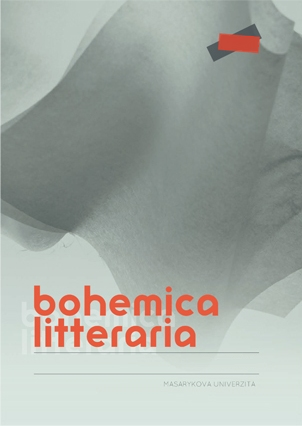Tříštění těla : středověká inkoherence Kafkova Rozjímání a Ortelu
The body falling apart: medieval incoherence of Kafka's Contemplation and The Judgment
Author(s): Matouš Jaluška, Richard MüllerSubject(s): Language and Literature Studies, Studies of Literature, Czech Literature
Published by: Masarykova univerzita nakladatelství
Keywords: Kafka; narrative coherence; Contemplation; The Judgment; medieval literature; modern epoch; mediality; miracle stories; body; technical media; Kafka; narativní koherence; Rozjímání; Ortel; středověká
Summary/Abstract: The study aims to show how the short stories by Franz Kafka, proverbially challenging with respect to the modern idea of narrative coherence, can be fruitfully read with the help of premodern paradigms and with regard to their medial aspects. In the first part, the authors examine the affinities between Kafka's authorial practices and the pre-Guttenbergian situation. On the material plane, both Kafka and medieval producers create an environment where various manuscript versions of the text exist in parallel and individual fragments are autonomous. We must also note the status of the fragment in Kafka as part of the temporal continuity created by both writing and life. The oft-noted absurdity of Kafka's texts can be validly interpreted as stemming from the "postreligious attitude", where residuals of the medieval idea of divinely sanctioned meaning are transferred into the secular, post-Cartesian world. The second part is focused on Kafka's first published book, Contemplation (Betrachtung, 1912), and two competing modes of coherence: the temporal coherence of a human life that proceeds towards its termination against the spatial coherence of the human body. The first mode relates to the countryside and eventually prevails over the second one, artificial and urban. The scars and wrinkles inscribed in the human face remind the reader of the external force of time, serving a purpose similar to the physical traces of saintly intervention in medieval miracle stories. It is, however, the new status of writing (especially handwriting) in the new media situation that brings the evidence of the body and textual evidence back to close proximity – again, a feature uniting the medieval condition and Kafka's modernity. Descriptions, especially those of gestures – with roots in the Yiddish theatre, open the texture of Kafka's fiction, providing key clues of sense and disorienting at the same time. Finally, the authors turn to The Judgment (Das Urteil, 1913) and present Georg's final suicidal jump as a modern instance of an ordeal ("Gottesurteil"). The world of The Judgment implodes as rhetorical structures inherent to the "text of a quarrel" permeate it. Significantly, however, Georg's death or survival is withheld from us. Considering the final destiny of the protagonist's body might enable readers to establish a coherent meaning of the story and see through all the rhetorical traps set inside. The challenge to coherence posed in the text continues – in reading rather than perpetuity
Journal: Bohemica litteraria
- Issue Year: 24/2021
- Issue No: 2
- Page Range: 69-99
- Page Count: 30
- Language: Czech

